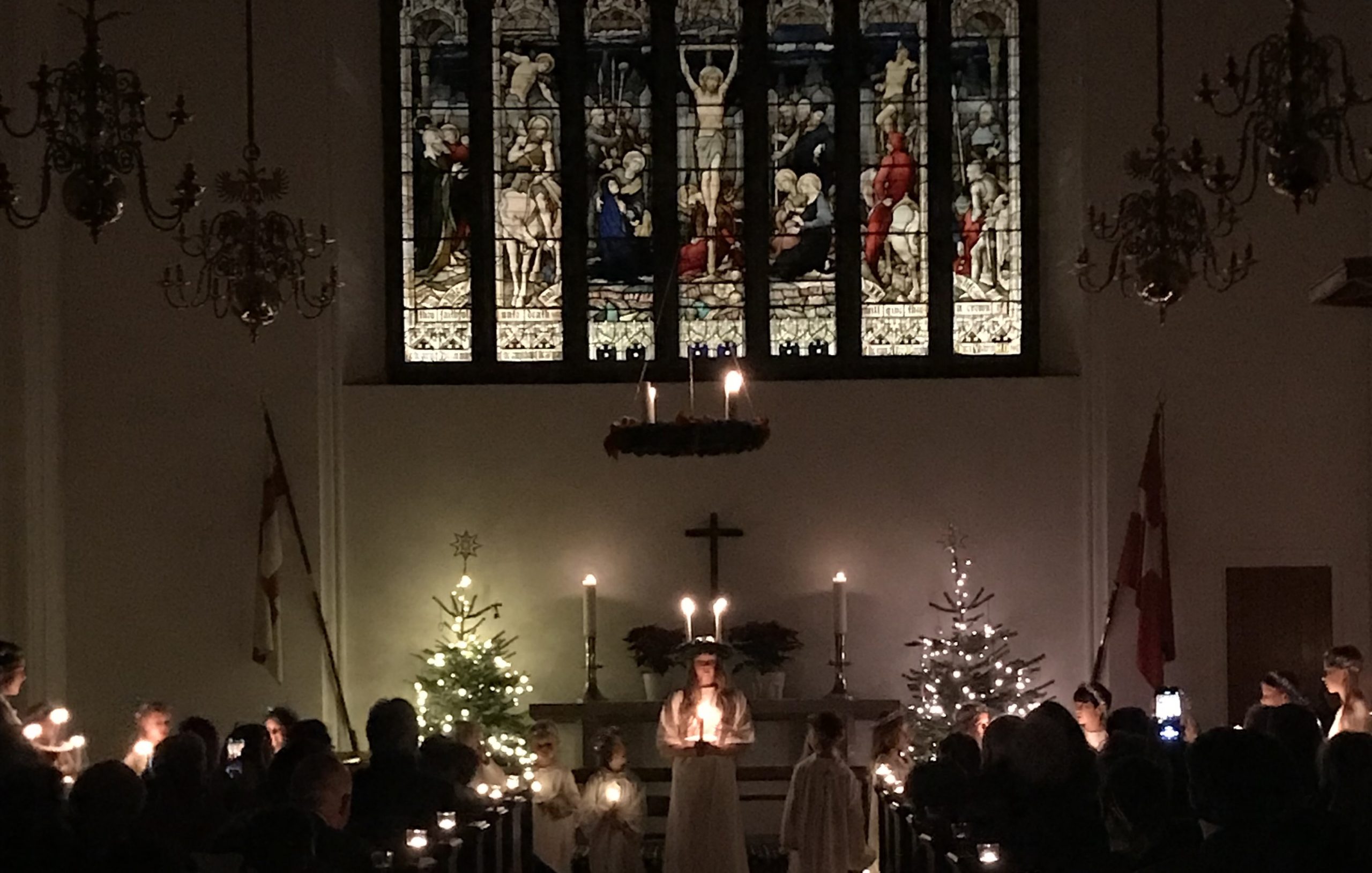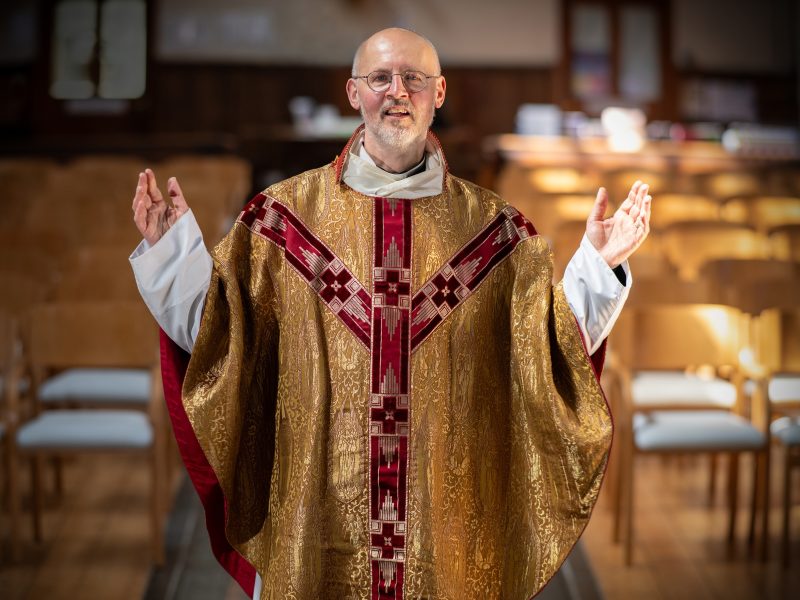By Julie Fitzgerald
The priest at the Danish Church in Regent’s Park, Flemming Kloster Poulsen, has recently left his post. He reflects that the past seven years have been ‘a great adventure’. To live in the peaceful St Katherine’s Precinct on the edge of Regent’s Park has, he says, been ‘a privilege’. But these years have also brought challenges to the Danish congregation: first Brexit, then covid, and simultaneously a significant project to refurbish the church and its neighbouring cultural centre.
Built in 1827, the church and surrounding buildings were formerly the home of the St Katharine’s Foundation (a religious charity), which commissioned the church’s glorious stained-glass window to celebrate Queen Victoria’s golden jubilee. In the early 1950s it became the base for the Danish community.
The church is a typically Scandinavian space, the interior designed by the celebrated architect and designer Mogens Koch. Simple whitewashed walls and an abundance of light are reminiscent of Danish rural churches. The simple carved altar is of English stone, as is the base of the pulpit. The font and wooden pulpit screening are of Danish origin.
St Katharine’s, part of the Danish Folk Church, was reopened by King Fredrik and Queen Ingrid of Denmark in 1952, and the Danish royal family’s support continues to this day. The current Queen, Margrethe II, designed and embroidered a chasuble, the outer garment worn by priests while conducting services, and the family supported the campaign to refurbish the church and the cultural centre next door (it raised three million pounds).
Flemming mentions that, post-Brexit, some former Danish residents have returned home. The church, too, has been grappling with the changes brought about by Brexit. Previously it employed two young church assistants and a student organist. Now the fees for work permits and access to NHS services make these arrangements impossible.
Sunday church services are held in Danish, but all are welcome. Many of the weddings and christenings held here are in English, to secure the involvement of non-Danish partners and wider family. The church is open for services and other events. A timetable is available on its website (see below); look out for dates of tours and Danish language classes for children and adults.
There is a very welcoming café, open for lunch and drinks, as well as a small shop selling Danish food, design and craft. The church hosts a parent group, a book club, talks, exhibitions, concerts, as well as celebrating Danish traditional festivals every year. Two of the most popular of these are the Danish Fair in May, and the Lucia service in December. This Christmas celebration sees girls and boys from the Saturday School parade to the church carrying candles, and carols are sung in Danish and English.
I ask Flemming about his wishes for the church and Danish community, as he buys his ticket back to Denmark: “That would be to maintain a meaningful combination of church and culture at the heart of the Danish community.” Will he miss London? “Oh yes, in London the whole world is round the corner. I will miss the hustle and bustle and the vibe.”
www.danskekirke.org



